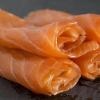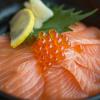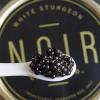Caviar Varieties Can Be Classified By Preparation
There are 4 main caviar processing methods:
1. Malossol
The literal translation of the Russian term malossol is 'little salt', and it's used to show that the fish roe was processed using the least amount of salt possible. Many agree that less salt is better for the quality of the caviar, but less salt also means that the caviar becomes highly perishable and therefore more expensive.
2. Salted
When you think about it, all types of caviar are salted caviar, but most connoisseurs prefer the previously mentioned malossol with less salt content to the 'salted' versions, but for those who like this kind, there are different salted caviar types to choose from including pressed and pasteurized caviar.
3. Pressed
Also known as payusnaya or pajusnaya, this type of caviar is made from weak, broken, or damaged caviar eggs that pass through the sieving process. They are then treated, salted, and pressed to produce caviar that has a jam-like consistency and is mostly used in recipes or as a spread.
4. Pasteurized
This type of caviar is firmer than the other types. The caviar is heat treated and then vacuum packed into glass jars to preserve it. This process may affect the taste and texture of the caviar.
Caviar Can Also Be Classified By The Fish Species That It Comes From:
Real Caviar
- Beluga (Sturgeon): Produced by the biggest freshwater fish, this caviar has big, pea-sized eggs that are clear, glossy, and soft. It has a creamy taste and colors range from light gray to black. Considered to be the highest premium grade there is, Beluga is endangered and currently illegal in the US.
- Osetra (Sturgeon): Also spelled Ossetra, Asestra, or Oscietra, this caviar has medium-sized eggs the size of BBs. They range in color from light gray to dark brown and sometimes come in golden brown. This variety of caviar has a nutty flavor and gives a salty richness that tastes of the sea.
- Sevruga (Sturgeon): This caviar has smaller eggs than Beluga or Osetra but it is found in more abundance than the other two, and it also comes at a less expensive price. The roe ranges in color from light gray to black and it has a taste that is slightly similar to Beluga in its butteriness except that it's saltier, richer, and much more intense.
Farmed Caviar
In the US, there is an ever increasing supply of farmed caviar from sturgeon and a variety of other fish species. These farms have grown and continue to do so because of the over fishing that almost drove the sturgeon fish extinct. US-farmed caviars include:
- Ossetra
- Hackleback Sturgeon
- Paddlefish Sturgeon.
Different Varieties of Caviar Include:
1. American Caviar
American caviar is the roe from sturgeon fish that is native to the US. This includes Wild Atlantic Sturgeon, Lake Sturgeon, White Sturgeon, among others. The term 'American Caviar' is mistakenly used by some when referring to any and all types of caviar from America (sturgeon and other species of fish).
2. Paddlefish Caviar
Sometimes marketed as American Caviar, this is a great alternative to Beluga caviar. It has a smooth texture and a distinctly rich, buttery flavor. The eggs are clear, glossy, with colors that range from steel gray to golden gray.
3. Hackleback Caviar
Sourced from the Missouri and Mississippi Rivers in the US, this caviar has firm, medium sized beads that come in a rich, glossy black color. It has a sweet, buttery, and slightly nutty taste and makes a great substitute for Beluga and Sevruga caviars.
4. Bowfin Caviar
More commonly known as 'Cajun Caviar' or Choupique, this caviar has small beads that are black in color. It is firm with a mild flavor, and it's considered as yet another good substitute for Beluga. The texture is somewhat chalky, but it's great for use in recipes.
5. Salmon Caviar
This is a popular favorite of sushi chefs the world over. The salmon caviar comes in reddish orange or bright golden orange and has medium to large-sized eggs that are even bigger than Beluga. The eggs have an intense salmon flavor and a distinctive 'popping' characteristic when eaten.
6. Whitefish Caviar
Caviar from whitefish comes in a beautiful range of colors including black, red, and golden orange. The eggs are small and they have a crunchy texture, but the taste is mild. This is also a favorite of many chefs worldwide and is usually infused with other flavors for interest including ginger, saffron, wasabi, and truffle.
7. Trout Caviar
This famed caviar has large beads, a golden orange color, and is said to be so good it can be eaten off the spoon. It has a mild, subtle flavor and similar to salmon roe, it pops in the mouth. It also works well as an appetizer and when infused with other flavors.
8. Lumpfish Caviar
This caviar is one of the pasteurized types and is quite inexpensive and very versatile which makes it popular with the majority of people. It comes from the cold, Nordic waters and is actually great tasting. The roe is fine-grained and slightly crunchy and comes in red or black. It also has a distinct briny flavor which makes it ideal for garnishes and appetizers.
9. Capelin Caviar
Also known as masago caviar, this type of caviar comes from smelt fish and is used a lot in sushi and sashimi recipes. It has small, fluorescent orange eggs and is a very inexpensive alternative to other types of caviar. It's also a pasteurized type that is consumed mostly in Japan but quickly gaining popularity in the rest of the world.









